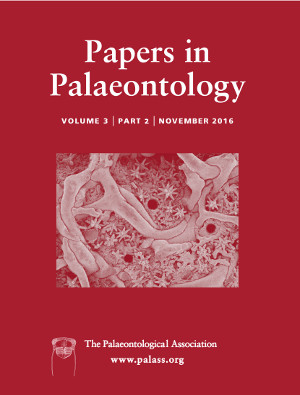Reg. Charity No. 1168330

The Cambrian trilobite Agraulos ceticephalus Barrande, first described from Bohemia, is the type species for the genus and subfamily Agraulinae. That subfamily is here regarded as a ptychoparioid grouping in the family Solenopleuridae, characterized by prominently punctate cephala. In Bohemia, it occurs with, and is related to, specimens of the genus Skreiaspis Růžička, differing mainly in their glabellar shapes and cephalic borders. More‐complete descriptions of their type species are based largely on undistorted museum topotypes and supplementary specimens of ceticephalus collected from Avalonian Newfoundland and Wales. With such information and the use of Photoshop, a reinterpretation of the original tectonically‐distorted syntypes of ‘A. longicephalus’ from Wales indicates that those specimens cannot be differentiated from ceticephalus. Consequently, Hicks’ species may be regarded as a junior synonym. Additional information derived from recent Welsh collections concerns the hypostome–rostral plate relationship of ceticephalus and the recognition of a ventral plate lying beneath the rostral plate. Non‐syntype Welsh material, subsequently assigned to ‘longicephalus’, includes specimens of A. lewisi sp. nov. with a prominent occipital spine, relatively long genal spines and upstanding thoracic axial spines. Other species of Agraulos occur in Newfoundland, viz., affinis, socialis, ‘sp. nov. 1’ and ‘sp. nov. 2’, marked by differences in their anterior cephalic borders, occipital rings and ornamented thoracic axes. Two species of Skreiaspis, viz., punctatissimus sp. nov and ‘S. sp. nov. 1’ are recognized in the Newfoundland succession along with two other agraulines, Skehanos quadrangularis Whitfield and ‘Agraulinae gen. nov.’ To demonstrate the significant differences between the biometrics of the external surfaces and their inner parietal moulds/casts, and those of meraspid–holaspid cranidial growth stages between 0.10 and 2.9 cm sagittal length, a suite of A. socialis cranidia intermixed with some other Newfoundland agraulines of comparable size is illustrated.